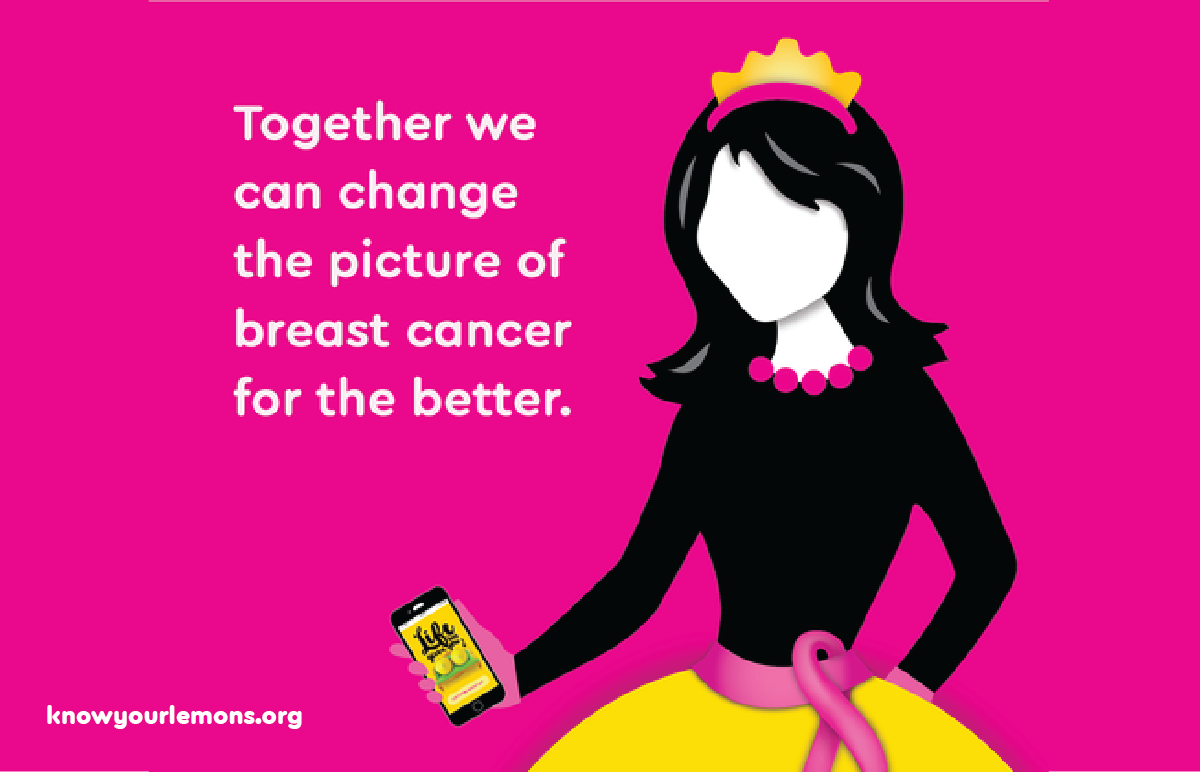Patient Education
The Know Your Lemons® Foundation makes it easy to improve the patient experience through well-designed breast cancer education materials. Whether you are a doctor in a clinic, a public health director or an activist looking for creative ways to educate those around you about breast cancer, our education campaign is designed for everyone. Health practitioners can use these materials at each point of the patient journey to increase the effectiveness of screening and diagnostic events.
These patient education materials were developed by the Know Your Lemons® Foundation and are designed to promote collaboration between patient and physician. By using these materials in the health environment, patient–physician encounters can become teaching moments as well as diagnostic events. For example, the self-exam guide can help doctors visualise to the patient how to perform a self-exam, either before they are of mammogram age or in between mammogram appointments. This allows for the patient to remain in control of their breast health.
What sets our educational materials apart
There are three barriers to educating about breast cancer:
1. Literacy: Most health messages are still communicated through text, often using medical terminology that challenges even the educated patient. In the USA, it’s estimated that 1 in 5 patients have low literacy. On a global scale, literacy is a much bigger problem. To save lives, we need to be able to communicate beyond text.
2. Taboo: Because breasts are usually associated with sex, images of them are often censored in public. This makes it difficult to “show” breast cancer to a large audience, especially in certain cultures or settings. To save lives and reach more people, we need to show breasts in a way that can be displayed in public.
3. Fear: Talking about cancer can be scary. Some just don’t want to talk about it. Fear of the unknown can also stop women from telling someone about a symptom during a stage when it can be treated. In developing countries, more than half of women diagnosed with breast cancer are diagnosed as terminal, compared to just 10% in developed countries. To save lives, we need to approach the topic in a more friendly and familiar way.
Here’s how our lemons overcome these barriers:
1. Visually Explain. When the right visuals are used, we can communicate information in ways that text alone cannot. In the 12 signs of breast cancer image above, we can explain symptoms without becoming graphic. Instead of seeing a diseased breast with open wounds and turning away out of disgust, we instead see symptoms. Symptoms that make sense no matter what language you speak or what skin color you have. Visuals also educate incredibly quickly. In just seconds you can learn all 12 symptoms (it actually took longer for you to read this paragraph than to learn from this lemons image).
2. Lemons have nipples and pores, but are not breasts. By using a lemon as a stand-in for the breast, we can show detailed information and side-step all of the issues that lead to censorship with breasts. It isn’t about limiting the body or changing the attitude of the entire world, it is about respecting the embarrassment and customs that many people have when it comes to displaying breasts, and the hesitation to touch themselves during a self-exam. If we can seperate the breasts from sex when it comes to breast health by using a friendly and approachable message, we can accomplish a lot and fight for the right goal: saving lives through education.
3. Reduce Fear and make it universal. Cancer is a scary topic that is often avoided. If the message is designed in a friendly way that people can relate to, no matter their age, ethnicity or gender, we can educate with a tremendous impact. The female figure above is nearly universal. In Japan she looks Japanese. In Colombia she looks Colombian. In France she looks French. In the Middle East, she looks Muslim. With a hair change, she’s African. Add a flower to her hair and she’s Samoan. We call her The Mayor, but it’s just one example of how good design can make a scary topic a friendly one.







